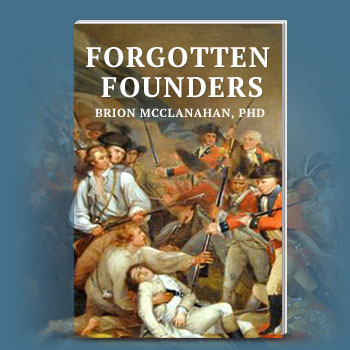This article was originally printed at LewRockwell.com
Changes are coming to our fiat currency. Andrew Jackson will be replaced on the $20 and both the $5 and $10 will also be reworked, ostensibly in the name of “inclusion” and “diversity,” but also to prevent against “counterfeiting.” Funny because the United States has been running the printing presses nonstop for the last decade in an attempt to “save the economy.” Nothing like legal counterfeiting to combat illegal counterfeiting.
Alexander Hamilton and Abraham Lincoln will still be featured on the face of both the $10 and $5 respectively, but other images will grace the back of both notes.
I think it’s about time.
But we are choosing the wrong people and the wrong events to feature on both sides of our “money.”
Jackson was once a proponent of central banking, that is until he found out Henry Clay was behind the bill rechartering the Second Bank of the United States. He also broke the law after he vetoed the re-charter bill by illegally withdrawing United States government deposits and ordering his Secretary of the Treasury, Roger Taney, to funnel them to State banks, took the wrong side in the nullification crisis, favored an illegal force bill to put South Carolina back “in-line,” and favored unconstitutional federal legislation that unilaterally voided signed treaties with the Five Civilized Tribes of the South in 1830.
On second thought, he should stay.
He is in good company with Lincoln, the man who ignored the Constitution for four years while “best subduing the enemy,” and who favored the re-establishing of a central banking system. Lincoln also followed Jackson’s blueprint for military coercion of a State and ordered the largest mass execution in American history when thirty-eight members of the Dakota tribe were simultaneously hung in 1862.
As for Hamilton, he was the architect of the unconstitutional central banking system, federal subsidies for internal improvements, high direct taxes, and a proponent of paid patronage otherwise known as federal welfare, all the things a growing government needs.
That said, with our current monetary policy, it probably won’t be long before the United States needs to reconsider printing higher denominations of Federal Reserve Notes than the $100.
Critics will call this nonsense and point to a “strong” dollar, but inflation is coming. It’s not if but when, and Americans should be reminded of those who created the mess when they are shelling over $500 for a loaf of bread.
I would start with removing Benjamin Franklin from the $100 and replacing him with Woodrow Wilson. Who better to be on the c-note than the man who signed the Federal Reserve into existence? The Philadelphia State House on the reverse should be replaced with the Jekyll Island resort, the birthplace of the FED.
We will also need to bring back the $500. Franklin Roosevelt should be on that newly printed greenback. FDR created a whole new class of federal spending with the New Deal and set the United States on the path to insolvency. He also hated gold and silver. Who would be a better reminder that your money is worthless and the government can (illegally) confiscate real wealth than the man who did it…twice? The reverse should have a pastoral image of people waiting in line to buy sugar during World War II.
Resurrecting the $1000 note would be a necessity once the dollar crashes, and no one would be better to grace that note than “guns and butter” Lyndon Johnson. It was Johnson’s warfare state and Great Society that ultimately forced the general government to come off a precious metals standard in 1971. Americans should remember the 36th President for his role in doubling the federal budget and speeding up the process of American bankruptcy. Perhaps a commemoration of Harry Truman signing up for Medicare or Johnson asking for more federal aid in the Vietnam conflict would be a suitable image for the reverse.
The new face of the $5000 should be no other than Tricky Dick himself, Richard Nixon. The “Nixon Shock” of 1971 unilaterally canceled the Bretton-Woods Agreement and forced the United States into a rapid inflationary period. Nixon’s own policies contributed to the problem. His “New Federalism” increased spending and led to greater centralization in Washington D.C. An image of Nixon delivering his “New Economic Policy” to the American public in August 1971 would be outstanding for the reverse.
The final denomination for these large bills is the $10,000. This one is special and should include both George W. Bush and Barack Obama on the front. Who better to remind Americans of the trillions of debt, mountains of unconstitutional legislation, quantitative easing, and massive government created bubbles during their administrations? The reverse should include a painting of all the FED chairmen and leaders of the political class that contributed to the financial mess that has become the American economy, similar to that of the famous John Trumbull painting of the Declaration of Independence. The irony would not be lost on those burdened by debt, taxation, and a worthless dollar.
I won’t hold my breath for these changes.
As a consolation, we’ll still be able to slap several Tubman’s for a candy bar because feeling good about our history is more important than actually saving the dollar.

